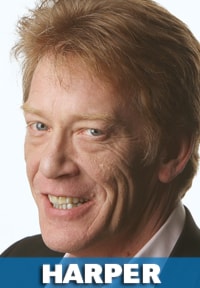A perception has taken root in some quarters on both sides of the border that a U.S. decision on the Keystone XL pipeline, the most contentious cross-border issue and a key to the Harper government’s economic strategy, has been made.
All that is left would be the politics, a mix that includes a Massachusetts special election, the confirmation of an Environmental Protection Agency administrator, the most advantageous timing, and the decision on whether it should be wrapped in a bigger climate change package.
Not so, says David Jacobson, the outgoing U.S. ambassador to Canada, who is adamant that the fate of the 2,700-km pipeline from Alberta to the Gulf of Mexico is still very much in play.
“No decision has been made. That’s not spin; that’s the truth” said Jacobson this week.
Jacobson said the Keystone decision is following a rigorous process as laid out in U.S. regulations, a process that likely has at least four more months left, meaning governments in Ottawa and Edmonton should not be looking for a final decision — which could be made by President Barack Obama — until at least October or November.
The official Canadian case has been made time and again by Prime Minister Stephen Harper, an overly combative Natural Resources Minister Joe Oliver, Alberta Premier Alison Redford and her neighbour, Saskatchewan Premier Brad Wall.
Even the coach of the Los Angeles Kings, Darryl Sutter, famously vowed to lobby Obama on the need for the pipeline when the president hosted a reception for last year’s Stanley Cup winners (he didn’t).
Some believe the steady procession of Canadians traipsing down Pennsylvania Avenue has been overkill, almost an irritant. Jacobson says the case has been made — on both sides of the argument.
“I believe they (Canadian politicians) respect our process. They have not tried to interfere. They have tried to make sure the decision-makers ... understood their side of the story, and I believe the decision-makers do understand their side of the story.
“Pretty much every argument on every side has been made, and in some cases made many times over.’’
Keystone has become an issue in next Tuesday’s election in Massachusetts, where Democrat Ed Markey seeks to replace Secretary of State John Kerry as U.S. senator.
San Francisco billionaire Tom Steyer, a hedge fund founder who has poured hundreds of thousands of dollars into anti-Keystone advocacy, has made a pipeline that goes nowhere near the state an issue after his intervention helped sink Markey’s Democratic primary challenger whom he deemed too soft on Keystone.
Gina McCarthy’s nomination to head the EPA is being held up by Republicans, but Jacobson says that is not a decision-breaker.
During his time in Ottawa, Jacobson has proven adept at dealing with any irritants in a bilateral relationship that needs attention, but rarely triage. “The relationship is like a stew that is on simmer and needs to be stirred constantly,’’ says Paul Frazer, a former Canadian diplomat, now a Washington-based consultant. “Every so often something pops up and boils over.’’
Jacobson is known as a FOB, a name that once meant a Friend of Bill during the Clinton administration, when that badge of honour meant the president would take your calls. Clinton’s men in Ottawa, James Blanchard and Gordon Giffin, were said to be FOBs.
Jacobson is a Friend of Barack, a Chicago corporate lawyer who became a major Obama fundraiser and worked on the president’s transition team before Obama tapped him for the Ottawa post.
“I talk to him when I need to talk to him,’’ Jacobson says. “If there is anyone in Washington I need to talk to, I pick up the phone and call them, and I do it all the time.’’
Jacobson, who departs next month, also did something no other U.S. envoy has done — although he credits his wife, Julie.
In their private residence, they decided to hang the early-20th-century work of Canadian artists, including A.Y. Jackson, Emily Carr and Stanley Cosgrove, alongside the American artists who U.S. ambassadors are encouraged to display worldwide.
It was, Jacobson says, emblematic of the two countries’ close physical ties.
Included is Green Mountains, Canada, a rare Canadian landscape done by American artist Georgia O’Keeffe, which Julie Jacobson somehow talked off the walls of the Art Institute of Chicago.
The U.S. ambassador was hanging Canadian art in his Ottawa home, while down the street John Baird was taking it down from the foyer of the Foreign Affairs building on Sussex Drive. But Jacobson just laughs at that irony. He’s a diplomat, after all.
Tim Harper is a syndicated Toronto Star national affairs writer. He can be reached at tharper@thestar.ca.
